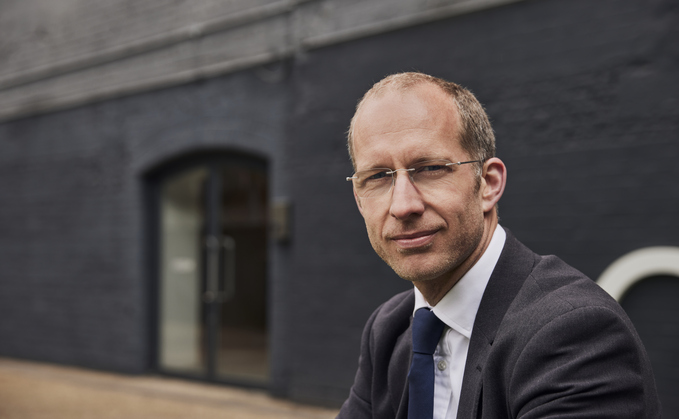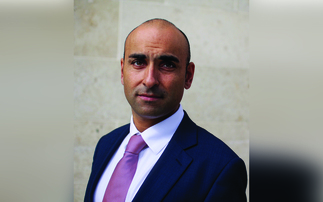
Stuart Clark, Portfolio Manager, Quilter
What is the background behind WealthSelect, and how has it performed?
We launched WealthSelect in 2014, in response to the evolving needs of advisers and their clients. With changing regulations, and increasing numbers of clients, investment propositions were becoming harder for advisers to manage.
Advisers were looking for an outsourced solution to help manage the asset allocation, manager selection, and day-to-day running of their clients' portfolios. That's why we brought together a team of experts to develop and launch WealthSelect to actively manage and take care of their clients' portfolios, so that advisers can focus their time on their client's other financial planning needs.
In the past eight years, we have managed to deliver strong client outcomes, and significantly outperformed against our comparators.
We have focused on creating balanced, well-diversified portfolios, and a key part of the job is to try and avoid too much style or market cap bias. Our understanding of where the portfolios are positioned and incrementally shifting them to reflect any potential headwinds or tailwinds in our regular rebalances is a reason why the original WealthSelect Managed portfolios have been so successful over the years.
Can you tell us more about the enhancements you've made to WealthSelect this year?
In March 2022 we significantly enhanced the portfolios to enable advisers to consider the investment costs and environmental, social, and governance (ESG) preferences of their clients.
As a result, we've expanded the offering and have launched Responsible and Sustainable portfolios.
With the Responsible portfolios, available across eight risk levels and in active, passive, and blended investment styles, we aim to achieve a reduction in the overall carbon footprint of these portfolios compared with the MSCI All Country World Index. At the same time, we manage the overall ESG risk and crucially still maintain our ultimate focus on maximising returns for the given level of risk.
We also launched eight Sustainable portfolios, which are only available in an active investment style. This is because we feel it's important to have that extra level of engagement and decision-making around the interaction of the companies, something which we don't think is achievable in passive investing at the moment.
The Sustainable portfolios also incorporate some additional exclusions- primarily tobacco and controversial weapons. There are also some other areas that we'd normally seek to avoid, but where there might be a small exposure if it is a legacy asset or contractual agreement, but where the majority of the holding is in line with our objectives and philosophy.
Overall, we are looking to align the Sustainable portfolios with the UN Sustainable Development Goals (SDGs), which were launched in 2015 and are designed a blueprint to achieve a better and more sustainable future for all.
Therefore, we are aiming to introduce multiple themes within the portfolios so that we can target different SDGs across both the environmental and social space. We already had a strong focus on governance across the original 16 portfolios, and so we will maintain and carry that focus across to the new portfolios.
Alongside this, we also added passive investment options. Just like the rest of the WealthSelect portfolios, the Managed Passive and Responsible Passive portfolios are risk targeted multi-asset investment solutions, and, as they are made up of passive building blocks, they are available at a highly competitive cost.
You've launched Responsible and Sustainable portfolios, but given the jargon in this area how do you define Responsible and Sustainable?
It is true that ESG can mean different things to different people and is an emotive topic. In addition, ESG funds can often be similarly labelled but do something completely different. For this reason, we have focused on developing a very clear definition of what responsible and sustainable are, and just as importantly what they're not.
In the Responsible portfolios we are looking for managers who are leaders in ESG integration, but we stop short of implementing widespread exclusions, aside from our firm-wide exclusions on cluster munitions and anti-personnel landmines.
In the Sustainable portfolios we are seeking to support a broad range of social and environmental outcomes, which are supporting the UN SDGs. So, the fund managers we seek to use in the portfolios are still ESG leaders but are going one step further and looking for companies whose products and services are aligned with UN SDGs.
To help find the right managers for the Sustainable portfolios, a long list of funds is whittled down to fit the investment criteria, which is then put through our screening process. This list is then subject to fund due diligence to review the manager's approach to ESG integration.
Finally, the process questions the intentionality of the funds, and whether its investment universe is based on the sustainable outcomes it's looking to achieve. For example, within the clean energy theme, investments should be focused on solutions to increase the provision of clean energy, and that should be demonstrated through holdings and alignment with the relevant UN SDGs.
Because the threshold for entry into the Sustainable portfolios is so high, theoretically any fund held in Sustainable could potentially be held in Responsible or Managed if it fits the balance of those portfolios.
How does the asset allocation approach differ across the portfolios?
At a very high level, the asset allocation between the original Managed portfolios and the Responsible portfolios has a large degree of similarity.
They have the same process and philosophy, and we start with the same strategic asset allocation model and make the same tactical asset allocation views as to whether we are underweight or overweight a particular region or style.
The manager selection is where it starts to differ. There's a degree of overlap, but around two-thirds of the Managed portfolios holdings will be different to Responsible because they don't necessarily meet the threshold for the Responsible portfolios.
Between the Managed and Sustainable portfolios there's only a very small overlap because the objectives of the Sustainable portfolios are much tougher to achieve. As a result, we also build the Sustainable portfolios in a different way. The funds we invest in tend to be global in nature, but they might adopt a single or multi-thematic approach, that are chosen to complement the wider themes in the portfolio. For example, do we want more emphasis on clean water, or decarbonisation plays, or nutrition, and what holdings can help us achieve that?
However, while there are differences at the macro and micro level in the Managed, Responsible and Sustainable portfolios, the one constant is that they all work to the same risk level scale, they just have slightly different approaches of getting there.
We also must be aware that adopting an ESG-integrated approach is much harder in other asset classes. For example, with government bonds it is more difficult to assess the country risk in relation to your ESG objectives, and so we have created an ESG neutral section of the portfolios.
This is for areas where there is no significant damage being caused by investing in that space, so they're not negatively affecting the ESG risk profile of the portfolios. At the same time, we're not trying to ‘greenwash' our portfolios and claim that they're having a positive effect. This way we can still hold these ‘neutral' investments that can provide useful diversification benefits.
That said, there is constantly new developments in the ESG investing space, and we are actively looking at how this may develop in the future.
Having expanded WealthSelect from 16 to 56 portfolios, how are you supporting that change in terms of resources and tools?
While I'm the lead portfolio manager, I've always had the support of the wider investment team, including other portfolio managers, research analysts, and fund analysts. As we have built out our ESG integration, and the new portfolios, we have also expanded the responsible investment team, hired dedicated responsible investment analysts, and one of our ESG specialist portfolio managers, Bethan Dixon, has been working closely on the development and management of the new portfolios.
It took a while to bring the new portfolios to market because we wanted to ensure the right resources and tools were in place, and everything was aligned ready to scale up the management of the portfolios, produce the responsible investment reports, and ensure we can carry out the engagement and monitoring that is absolutely vital for managing the portfolios successfully.
How can we help advisers avoid greenwashing? How have you dealt with this issue?
There are a lot of funds out there, and the important thing for advisers is understanding the difference in terminologies. For example, two funds could both be called ESG with a focus on the UN SDGs, yet the processes and philosophy behind them could be very different. One manager might look at all the SDGs, while another might be focused on just one. So, it is key to do a deep dive and look at the underlying processes.
For us, the first thing we tried to do was be clear on what our ESG solutions are trying to achieve, and what they're not.
If an adviser has an ethical client with strong views on say alcohol or animal testing, then the Responsible portfolios might not be suitable because they don't implement those kinds of rigid objectives. Equally, if a client is more environmentally focused, then the Sustainable portfolios follow themes across both environmental and social issues, so they might not be quite right for them.
Another key factor that advisers can look for is the provision of reporting that demonstrates a portfolio is meeting its ESG objectives and doing what it says. This all comes down to data.
In the marketplace there are more than 60 ESG data providers, so if you're using tools from different places they could have different methodologies, different opinions, and different rating scales.
For an adviser, it can be great that ESG data providers can offer different opinions so that you can challenge your own views on a holding. But it's not that useful if you're trying to compare fund A based on one tool and fund B on another, as it's not comparing apples with apples.
This is where our development of our own ESG data infrastructure is so important to help us report on our portfolios and underlying holdings in an accurate and timely manner.
Find out more about the WealthSelect Managed Portfolio Service here
This post is funded by Quilter
Investment involves risk. The value of investments and the income from them may go down as well as up and investors may not get back the amount originally invested. Because of this, an investor is not certain to make a profit on an investment and may lose money. Exchange rates may cause the value of overseas investments to rise or fall.
Please be aware that calls and electronic communications may be recorded for monitoring, regulatory and training purposes and records are available for at least five years.
The WealthSelect Managed Portfolio Service is provided by Quilter Investment Platform Limited and Quilter Life & Pensions Limited. "Quilter" is the trading name of Quilter Investment Platform Limited (which also provides an Individual Savings Account (ISA), Junior ISA (JISA) and Collective Investment Account (CIA)) and Quilter Life & Pensions Limited (which also provides a Collective Retirement Account (CRA) and Collective Investment Bonds (CIB)).
Quilter Investment Platform Limited and Quilter Life & Pensions Limited are registered in England and Wales under numbers 1680071 and 4163431 respectively. Registered office at Senator House, 85 Queen Victoria Street, London, United Kingdom, EC4V 4AB. Quilter Investment Platform Limited is authorised and regulated by the Financial Conduct Authority. Quilter Life & Pensions Limited is authorised by the Prudential Regulation Authority and regulated by the Financial Conduct Authority and the Prudential Regulation Authority. Their Financial Services register numbers are 165359 and 207977 respectively. VAT number 386 1301 59.
Quilter uses all reasonable skill and care in compiling the information in this communication and in ensuring its accuracy, but no assurances or warranties are given. You should not rely on the information in this communication in making investment decisions. Nothing in this communication constitutes advice or personal recommendation.













